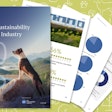
After Coach Ken Carter’s inspirational keynote address, Coach Carter, his coterie, a camera crew and myself moved to the show floor of Petfood Forum 2022. We filmed an interview with Coach Carter, then waited for a championship high school basketball team to arrive. Like the at-risk youth he led to fame in real life and reel life in the film “Coach Carter,” these players’ talents gave them a shot at rising above adversity. Coach Carter had invited the team to Petfood Forum as an opportunity to see career options outside of athletics. Sports could give them a route to riches, but stardom wasn’t a sure thing, whereas education and entrepreneurship provide surer options.
While we waited for the team, I struck up a conversation with Devon Smith, the team’s assistant coach. I asked him if he could see any of his players starting a pet food company. They don’t have any money, he replied. You might be surprised, I said, many pet food companies started in kitchens with food processors, ovens and sweat equity. Especially for pet treats and supplements, the barrier to entry is relatively low, considering the potential for growth in the U.S. market. Jobs in the pet industry remain open as well. The Petfood Industry Career Center has nearly 800 openings.
One of Smith’s players, Damien Mayo Jr. came from Bellerive, Missouri, USA, near where I lived while in college at the University of Missouri – St. Louis. I grew up a few miles from Mayo Jr. on Margo Ave. in Ferguson until 4th grade, then in Florissant, a bit further north. Bellerive and the area around the college have a strong ethnic divide. Predominantly White, lower-income residents live on one side of Natural Bridge Road, with university professors, students and a country club on the other. While some see a poster-child example of privilege juxtaposed with systemic racism in St. Louis’ North County, or NoCo, I see a pet food business opportunity.
Despite significant challenges in the region, I see a way for people in my hometown to join the burgeoning pet food industry and bring jobs to NoCo and similar areas. Likewise, Ukrainian and Afghani refugees could find business success in the U.S. pet food industry and use that to help their homelands and resettlement efforts. Refugees’ plights are often well-known, yet many feel largely powerless to help. Buying a dog biscuit to help people escape suffering turns a banal buy into a social statement.
Everyone loves an underdog, especially in an industry catering to canines. Pet product start-ups by lower-income groups, ethnic and religious minorities, immigrants and refugees already start off with a strong underdog origin story. Pet owners increasingly want to know that their purchases support their ethics, a carry-over from other consumer products. This exemplifies the social aspect of sustainability. Sustainability-focused consumers demand equitable societies worldwide for present and future generations. For example, Pet owners didn’t want enslaved people harvesting the fish used in their cat’s food. Purina PetCare, Mars Petcare and other major brands responded by scrutinizing their supply chains. Beyond wanting to know that no evil went into their pet’s bowl, dog and cat owners respond to positive stories about those products.
Pet owners’ interest in social justice could work as a promotional tool for entrepreneurs with inspirational tales. This brand storytelling helps differentiate a pet brand start-up. Numerous pet foods tell the story of an ill or finicky pet that wouldn’t or couldn’t eat the Big Pet Food brands, so someone started a company to meet the needs of their dog or cat. Even more pet food brands build their story by donating to pet shelters and helping animals in need during disasters, both natural and human-made.
However, fewer pet food companies have an origin story involving overcoming economic and societal challenges. Pet owners seem primed to buy products that allow them to affirm their ethics with economics. Sustainability and nutrition claims have become table stakes. An inspiring brand story that goes beyond cliches would help a pet food or treat stand out.
For example, my childhood home, Ferguson, became infamous nearly a decade ago and a flashpoint for cultural change. The name-recognition of Ferguson would immediately register with exactly the type of pet owner that would be most likely to buy a product based on social justice and sustainability claims. While the tragic events that occurred in Ferguson shouldn’t be cashed-in on, people nationwide recognize the name and have some inkling of the challenges there. A minority-owned pet treat or supplement brand founded in Ferguson could appeal to well-meaning pet owners looking for more than nutrition from a premium pet product. Similarly, refugee groups could form businesses that gave pet owners a simple means to help a cause they believe in. For example, amid the chaos of war, one Ukrainian pet food company, Kormotech, rapidly restarted production in-country and got pet food in the bowls of Ukrainian dogs and paychecks in workers pockets.
Pet owners tend to have big hearts. While some true Cynics love dogs more than people, pet owners have learned compassion for another species. These pet owners want to hear a brands’ inspiring back story and know that they are nurturing other people and the planet, while they feed their dogs, cats and other pets.
In a survey, I asked PetfoodIndustry.com readers if their company had actively tried to recruit minority employees. Although the response rate was low at nine, 67% stated their company had made efforts to increase ethnic diversity. Despite this, a look around the show floor at Petfood Forum made it obvious that diversity had yet to come to the pet food industry. That doesn’t mean it couldn’t though.


















